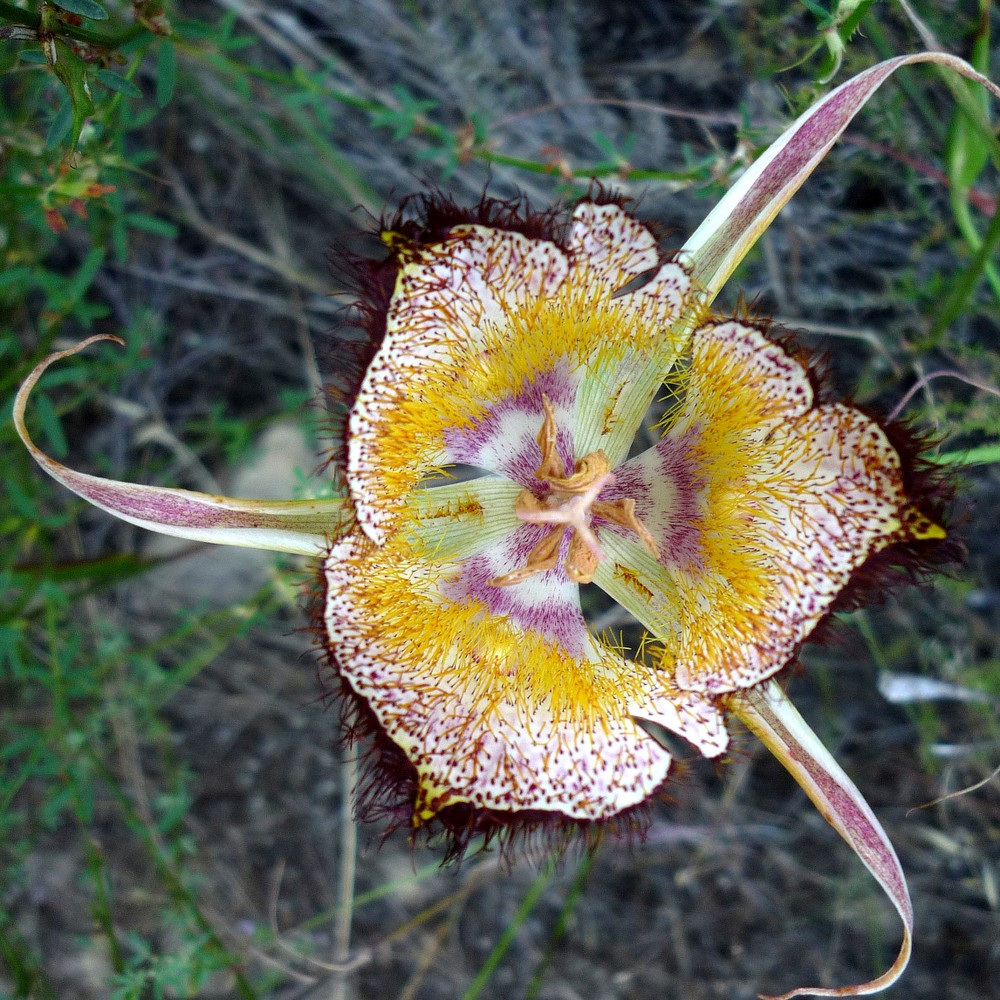Plummers mariposa lily
(Calochortus macrocarpus macrocarpus)

Description
Calochortus is a genus of flowering plants in the lily family. The group includes herbaceous, perennial and bulbous species, all native to North America (primarily the Western United States). The genus Calochortus includes mariposas (or mariposa lilies) with open wedge-shaped petals, globe lilies and fairy lanterns with globe-shaped flowers, and cat's ears and star tulips with erect pointed petals. The word Calochortus is derived from Greek and means "beautiful grass". Calochortus flowers have six tepals. Unlike most other Liliaceae, Calochortus tepals are in two series that differ in size and color. The outer three are generally narrower and more sepal-like, while the inner three are larger, usually with bright marks at the base. They may be described as petals. The flowers are borne on a stem that arises from a bulb, generally in the spring or early summer. Flowers can be white, yellow, pink, purple, bluish, or streaked. The insides of the petals are often very 'hairy'. These hairs, along with the nectaries, are often used in distinguishing species from each other. The genus Calochortus includes approximately 70 species distributed from southwestern British Columbia, through California and Mexico, to northern Guatemala and eastwards to New Mexico, Nebraska and the Dakotas. Calochortus is the most widely dispersed genus of Liliaceae on the North American Pacific Coast. Of these, 28 species are endemic to California. In 1998, T.B. Patterson conducted a phylogenetic analysis of the genus, dividing it into seven main clades. The study indicated highly localized speciation, so that different clades were strongly linked to specific habitats, as follows: Mariposas: dry grasslands, open chaparral, semideserts Star-tulips: wet meadows Cat's ears: montane woodlands Fairy lanterns: oak woodlands, closed forests. The bulbs of many species were eaten by Native Americans. These bulbs were eaten raw or gathered in the fall and boiled, and the flower buds when young and fresh. They were eaten by the Mormon settlers between 1853 and 1858 when famine threatened new immigrants in the Great Salt Lake Valley, due to crop failures. Native Americans called Calochortus "sego". They used it as food, in ceremonies and as a traditional medicinal plant.
Taxonomic tree:







